Corylophidae
Minute hooded beetles, Minute fungus beetles, Hooded beetles
Joseph V. McHugh, James A. Robertson, and Adam Slipinski


This tree diagram shows the relationships between several groups of organisms.
The root of the current tree connects the organisms featured in this tree to their containing group and the rest of the Tree of Life. The basal branching point in the tree represents the ancestor of the other groups in the tree. This ancestor diversified over time into several descendent subgroups, which are represented as internal nodes and terminal taxa to the right.

You can click on the root to travel down the Tree of Life all the way to the root of all Life, and you can click on the names of descendent subgroups to travel up the Tree of Life all the way to individual species.
For more information on ToL tree formatting, please see Interpreting the Tree or Classification. To learn more about phylogenetic trees, please visit our Phylogenetic Biology pages.
close boxIntroduction
Corylophidae is a small, cosmopolitan family including 285 species and 27 genera divided between 2 subfamilies, Corylophinae LeConte, 1852, and Periptyctinae Ślipiński et al., 2001. The group is commonly known as the Minute Hooded Beetles due to their diminutive size and the tendency for the pronotum to be enlarged anteriorly into a broad shelf-like projection that conceals the head from dorsal view.
Characteristics
Corylophidae includes some of the smallest known insects. Adults are usually 0.5 to 2.5 mm long; however, some species of Periptyctinae can reach 3.5 mm. The body form ranges from hemispherical (e.g., Cleidostethus) to elongate oval (e.g., Clypastraea) to latridiid-like (e.g., Foadia). Corylophids are typically dull brown, but some species have contrasting yellowish-brown patches on the pronotum or elytra. The integument is often densely punctured and may be glabrous or bear short, fine recumbent setae. Most corylophid adults can be diagnosed using the following morphological features:
- Maxilla with single apical lobe
- Mesotrochanter short and strongly oblique
- Head usually covered by pronotum
- Frontoclypeal suture absent
- Antennae elongate with 3-segmented club
- Procoxal cavities closed externally
- Tarsal formula 4-4-4
- Pygidium exposed
Corylophid larvae vary greatly in general body form. Most are spindle-shaped (fusiform), but some are broadly oval and strongly flattened (i.e., onisciform), while others (Periptyctinae) may be broad anteriorly and taper posteriorly. Most corylophid larvae can be diagnosed with the following characters:
- One or two stemmata
- Antennal insertion broadly separated from the mandibular articulation
- Presence of paired dorsal or dorsolateral gland openings on abdominal segments 1-7, 1 and 8, or 2 and 8
Biology
Corylophids are microphagous fungivores as larvae and adults, feeding on fungal spores and hyphae. A broad range of fungi are utilized, but the majority of known hosts belong to Ascomycetes and Deuteromycetes (Ślipiński et al. 2010). Corylophids are typically encountered in habitats where molds and other fungi are common (e.g., under bark, in decaying plant matter, etc.). Some corylophids are specialists on Basidiomycetes.
Most corylophids are thought to be free living. Cleidostethus meliponae, however, is a highly specialized inquiline of stingless bees in Africa (Arrow 1929, 1930). Some corylophids have been found in bird nests (Scott 1917). Others have been associated with scale insects (Paulian 1950). In each case, the corylophids are probably feeding on some type of fungus that occurs with the associated organism.
Many aspects of corylophid anatomy and biology are undoubtedly linked with the miniaturization that has occurred in this group. One species of Holopsis has its head modified into an elongate beak that can be inserted into individual spore tubes of polypore fungi to feed on basidiospores lining the tubes (Lawrence 1989). In a detailed anatomical study of Sericoderis lateralis, Polilov and Beutel (2009) observed many exoskeletal modifications that seem to be associated with miniaturization, including a fusion of some thoracic structures, loss of some joints, and a reduction in the number of tarsomeres and antennal segments.
Distribution
(see Ślipiński et al. 2010)
The subfamily Periptyctinae occurs only in eastern Australia. Corylophinae is represented in all major biogeographic regions. A few corylophine genera are cosmopolitan.
Taxonomy
Redtenbacher (1849) and LeConte (1852) recognized that corylophids formed a distinct group when they were still classified as part of Coccinellidae. Matthews (1888, 1899) first diagnosed this group as a family and established some of the internal classification by erecting five tribes. Noteworthy revisions of the internal classification were made by Paulian (1950), Pakaluk (1985 a–c), Pakaluk and Lawrence (1986) and Bowestead (1999). Hyplathrinus was moved from Latridiidae to Corylophidae by Pakaluk and Lawrence (1986). Periptyctus was transferred from Endomychidae into Corylophidae by Ślipiński et al. (2001). Bowestead et al. (2001) transferred Cleidostethus into the family from Coccinellidae. Ślipiński et al. (2009) described two new genera, provided adult and larval generic keys and diagnoses, and revised the classification based on a cladistic analysis of adult and larval morphology. The resulting scheme divides Corylophidae into two subfamilies, Periptyctinae and Corylophinae, and splits Corylophinae into ten tribes.
Classification (based on Ślipiński et al., 2009)
- Corylophidae
- Periptyctinae
- Pakalukodes
- Periptyctus
- Weirus
- Corylophinae
- Foadiini
- Ectinocephalus
- Foadia
- Hyplathrinus
- Priamima
- Cleidostethini
- Cleidostethus
- Aenigmaticini
- Aenigmaticum
- Stanus
- Orthoperini
- Orthoperus
- Parmulini
- Arthrolips
- Clypastraea
- Lepesmella
- Sicardianus
- Villiersium
- Peltinodini
- Holopsis
- Sericoderini
- Aposericoderus
- Sericoderus
- Corylophini
- Corylophus
- Homogrypinus
- Microstagetus
- Teplinini
- Teplinus
- Rypobiini
- Catoptyx
- Gloeosoma
- Hoplicnema
- Rypobius
Relationship of Corylophidae to Other Cucujoidea
Corylophidae is generally accepted as a monophyletic group (Ślipiński and Pakaluk 1991, Bowestead 1999, Robertson et al. 2008, Ślipiński et al. 2009). Sharp and Muir (1912) first recognized the cucujoid affinities of the family in their study of coleopteran aedeagi. Crowson (1955) placed Corylophidae into the Cerylonid Series (“CS”), a derived clade of Cucujoidea that currently also includes Cerylonidae, Bothrideridae, Latridiidae, Alexiidae, Endomychidae, Coccinellidae, and Discolomatidae.
Although recent molecular phylogenetic studies (Hunt et al. 2007; Robertson et al. 2008) support the placement of Corylophidae within the Cerylonid Series and as the sister taxon to part of Endomychidae, the more specific relationships of the family remain unclear. Hunt et al. (2007) recovered a sister group relationship between Corylophidae and the endomychid subfamily Merophysiinae (as “Holoparamecinae”). In an analysis with a more extensive sampling of CS taxa, Robertson et al. (2008) recovered a clade comprising Corylophidae and the endomychid subfamily Anamorphinae. Both molecular phylogenetic studies suggest that Corylophidae is part of a larger CS clade that includes Coccinellidae and Endomychidae. Latridiidae, whose members resemble Foadiini and Aenigmaticini, was resolved within that corylophid-coccinellid-endomychid clade by Hunt et al. (2007); however, Robertson et al. (2008) recovered Latridiidae in another major clade of CS taxa.
Discussion of Phylogenetic Relationships
In a phylogenetic study of the internal relationships of Corylophidae, Ślipiński et al. (2009) recovered Periptyctinae and Corylophinae as monophyletic groups. The elongate, latridiid-like corylophids, however, formed two distinct clades (Foadiini and Aenigmaticini) which were separated by the Cleidostethus clade. The tribe Aenigmaticini forms the sister taxon to a poorly resolved cluster of more derived corylophines, including Peltinodini, Sericoderini, Orthoperini, Parmulini, Corylophini, Teplini, and Rypobiini.
References
Arrow, G.A. 1929. A remarkable new genus of coccinellid Coleoptera. Annals and Magazine of Natural History, Series 10, 4, 463–465.
Arrow, G.A. 1930. A remarkable inmate of a bee’s nest. Natural History Magazine, 2, 182–184.
Blackburn, T. 1895. Further notes on Australian Coleoptera, with descriptions of new genera and species. XVIII. Transactions of the Royal Society of South Australia, 19, 201–258.
Böving, A.G. and F.C. Craighead. 1931. An illustrated synopsis of the principal larval forms of the order Coleoptera. Entomologica Americana, 11, 1–351, 125 pls.
Bowestead, S. 1999. A Revision of the Corylophidae (Coleoptera) of the West Palaearctic Region. Instrumenta Biodiversitatis, 3, 1–203 pp, 426 figs.
Bowestead, S. and R.A.B. Leschen. 2002. Corylophidae LeConte 1852. pp. 390–394. In R.H. Arnett, M.C. Thomas, P.E. Skelley and J.H. Frank (eds.), American Beetles. Volume 2. CRC Press, Boca Raton, Florida.
Bowestead, S., R.D. Booth, A. Ślipiński and J.F. Lawrence. 2001. The genus Cleidostethus Arrow, 1929 reappraisal and transfer from Coccinellidae to Corylophidae (Coleoptera: Cucujoidea). Annales Zoologici, 51, 319–323.
Casey, T.L. 1900. Review of the American Corylophidae, Cryptophagidae, Tritomidae and Dermestidae, with other studies. Journal of the New York Entomological Society, 8, 51–172.
Chandler, D.S. 1983. Larvae of wrack Coleoptera in the families Corylophidae, Rhizophagidae, and Lathridiidae. Psyche, 90, 287–296.
Costa, C., S.V. Vanin, and S.A. Casari-Chen. 1988. Larvas de Coleoptera do Brasil. Museu de Zoologia, Universidade de São Paulo, São Paulo.
Crowson, R.A. 1955. The Natural Classification of the Families of Coleoptera. Nathaniel Lloyd, London. 187 pp.
Hinton, H.E. 1941. The immature stages of Sericoderus lateralis. Entomologist, 74, 198–202.
Hunt, T., J. Bergsten, Z. Levkanicova, A. Papadopoulou, O. St John, R. Wild, P. M. Hammond, D. Ahrens, M. Balke, M.S. Caterino, J. Gómez-Zurita, I. Ribera, T. G. Barraclough, M. Bocakova, L. Bocak, and A. P. Vogler. 2007. A comprehensive phylogeny of beetles reveals the evolutionary origins of a super-radiation. Science 318: 1913-1916.
Lawrence, J.F. 1989. Mycophagy in the Coleoptera: feeding strategies and morphological adaptations. pp. 1–23. In N. Wilding, M. Collins, P.M. Hammond, and J.F. Webber (eds.), Insect - Fungus Interactions. 14th Symposium of the Royal Entomological Society of London in collaboration with the British Mycological Society 16–17 September 1987 at the Department of Physics Lecture Theatre Imperial College, London, Academic Press, London.
Lawrence, J.F. 1991. Corylophidae (Cucujoidea) (= Orthoperidae). pp. 495–497. In F.W. Stehr (ed.), Immature Insects, Volume 2, Kendall/Hunt Pub. Co., Dubuque, Iowa.
Lawrence, J.F. 1999. The Australian Ommatidae (Coleoptera: Archostemata): new species, larva and discussion of relationships. Invertebrate Taxonomy, 13, 369–390.
Lawrence, J.F. and E.B. Britton. 1994. Australian Beetles. Melbourne University Press, Carlton, Victoria.
Lawrence, J.F. & A.F. Newton, Jr. 1995. Families and subfamilies of Coleoptera (with selected genera, notes, references and data on family-group names). Pp. 779–1092 In J. Pakaluk and S.A. Ślipiński (eds.), Biology, phylogeny, and classification of Coleoptera: papers celebrating the 80th birthday of Roy A. Crowson. Muzeum i Instytut Zoologii PAN, Warszawa.
LeConte, J. L. 1852. Remarks on the Coccinellidae of the United States. Proceedings of the Academy of Natural Sciences of Philadelphia 6: 129–145.
Leschen, R.A.B. and S. Bowestead. 2001. Synonymical notes for Corylophidae and Cryptophagidae (Coleoptera: Cucujoidea). The Coleopterists Bulletin, 55 (3), 312–316.
Leschen, R.A.B., J.F. Lawrence, and A. Ślipiński. 2005. Classification of basal Cucujoidea (Coleoptera: Polyphaga): cladistic analysis, keys and review of new families, Invertebrate Systematics, 19, 17–73.
Matthews, A. 1888. Fam. Corylophidae. pp. 102–125. In F.D. Godman and O. Salvin (eds.), Biologia Centrali-Americana. Insecta, Coleoptera. II. Part 1. Dulau and Co., London.
Matthews, A. 1899. A monograph of the coleopterous families Corylophidae and Sphaeriidae. O.E. Janson publishers, London.
Morrill, A.W. 1903. Notes on the early stages of Corylophodes marginicollis LeC. Entomological News, 14, 135–138.
Pakaluk, J. 1985a. New genus and species of Corylophidae (Coleoptera) from Florida, with a description of its larva. Annals of the Entomological Society of America, 78, 406–409.
Pakaluk, J. 1985b. Phylogenetic position of Hyplathrinus (Coleoptera: Corylophidae). Entomological News, 96(2), 69–70.
Pakaluk, J. 1985c. Review of the New World genus Aenigmaticum Matthews (Coleoptera: Corylophidae). The Coleopterists Bulletin, 39, 207–214.
Pakaluk, J. 1987. Revision and phylogeny of the Neotropical genus Hoplicnema Matthews (Coleoptera: Corylophidae). Transactions of the American Entomological Society, 113, 73–116.
Pakaluk, J. and J.F. Lawrence. 1986. Priamima, a new genus of Corylophidae (Coleoptera) from Australia. Journal of the Australian Entomological Society, 25, 81–84.
Pakaluk, J., S.A. Ślipiński and J.F. Lawrence. 1995. Current classification and family group names in Cucujoidea (Coleoptera). Genus, 5, 223–268.
Paulian, R. 1950. Les Corylophidae d’Afrique. Mémoirs de l’Institut français d’Afrique Noire, 12, 1–126.
Peyerimhoff, P. de. 1919. Notes sur la biologie de quelques Coléoptères phytophages du Nord-Africain (troisième série). Annales de la Société Entomologique de France, Series 2, 88, 169–258.
Peyerimhoff, P. de. 1921. Etudes sur les larves des Coléoptères. I. Introduction. II. Corylophidae. III. Sphindidae. Annales de la Société Entomologique de France, Series 2, 90, 97–110.
Polilov, A.A. and R.G. Beutel. 2009. Developmental stages of the hooded beetle Sericoderus lateralis (Coleoptera: Corylophidae) with comments on the phylogenetic position and effects of miniaturization. Arthropod Structure & Development, 39(1), 52-69.
Redtenbacher, L. 1849. Fauna Austriaca. Die Käfer, nach der analytischen Methode bearbeitet. 883 pp. Carl Gerold’s Sohn, Wien.
Robertson, J.A., M.F. Whiting and J.V. McHugh. 2008. Searching for natural lineages within the Cerylonid Series (Coleoptera: Cucujoidea). Molecular Phylogenetics and Evolution 46 (1): 193-205.
Scott, H. (1917): Corylophidae (Coleoptera) from the Seychelles and Rangoon. Annals and Magazine of Natural History (8) 19: 1–33, pls. 1–5.
Sharp, D. and F. Muir. 1912. The comparative anatomy of the male genital tube in Coleoptera. Part III. Transactions of the Royal Entomological Society of London 1912, 447–642.
Ślipiński, S.A. and J. Pakaluk. 1991. Problems in the classification of the Cerylonid series of Cucujoidea (Coleoptera). pp. 79–88. In M. Zunino, X. Belles and M. Blas (eds.), Advances in Coleopterology . European Association of Coleopterology, Silvestrelli and Cappelletto, Torino.
Ślipiński, A., J.F. Lawrence, and W. Tomaszewska. 2001. The placement of Periptyctus Blackburn in Corylophidae (Coleoptera: Cucujoidea) with descriptions of a new genus and subfamily. Annales Zoologici, 51, 311–317.
Ślipiński, A., W. Tomaszewska, and J.F. Lawrence. 2009. Phylogeny and classification of Corylophidae (Coleoptera: Cucujoidea) with descriptions of new genera and larvae. Systematic Entomology, 34, 409–433.
Ślipiński, A., J.F. Lawrence and A.R. Cline. 2010. Corylophidae. pp 472-481. In R.G. Beutel and R.A.B. Leschen (eds.). Handbuch der Zoologie. Band IV, Teilband 38, vol. 2. De Gruyter, Berlin. In Press.
Tomaszewska, K.W. and A. Ślipiński. 2002. A review of the genus Periptyctus Blackburn (Coleoptera: Corylophidae). Annales Zoologici, 52, 499–532.
Title Illustrations

| Scientific Name | Clypastraea sp. |
|---|---|
| Specimen Condition | Dead Specimen |
| Identified By | Adam Slipinski |
| Life Cycle Stage | Adult |
| View | Dorsal |
| Copyright |
©
Adam Slipinski

|
| Scientific Name | Foadia maculata |
|---|---|
| Specimen Condition | Dead Specimen |
| Identified By | Adam Slipinski |
| Life Cycle Stage | Adult |
| View | Dorsal |
| Copyright |
©
Adam Slipinski

|
| Scientific Name | Cleidostethus meliponae |
|---|---|
| Specimen Condition | Dead Specimen |
| Identified By | Adam Slipinski |
| Life Cycle Stage | Adult |
| View | Dorsal |
| Copyright |
©
Adam Slipinski

|
| Scientific Name | Periptyctus quadrinotatus |
|---|---|
| Specimen Condition | Dead Specimen |
| Identified By | Adam Slipinski |
| Life Cycle Stage | Adult |
| View | Dorsal |
| Copyright |
©
Adam Slipinski

|
| Scientific Name | Stanus bowesteadi |
|---|---|
| Specimen Condition | Dead Specimen |
| Identified By | Adam Slipinski |
| Life Cycle Stage | Adult |
| View | Dorsal |
| Copyright |
©
Adam Slipinski

|
About This Page
We thank all members of the McHugh lab for their assistance with this project. We especially thank Floyd W. Shockley for providing assistance with the TreeGrow program. Support for the construction of this page was provided by an NSF AToL grant EF-0531665 to M.F. Whiting (subcontract to J.V. McHugh) and through an NSF PEET grant (DEB-0329115) to J.V. McHugh, M.F. Whiting, and K.B. Miller.
Joseph V. McHugh

University of Georgia, Athens, Georgia, USA
James A. Robertson

University of Georgia, Athens, Georgia, USA
Adam Slipinski

CSIRO, Australia
Correspondence regarding this page should be directed to Joseph V. McHugh at
mchugh.jv@gmail.com
, James A. Robertson at
erotylid@gmail.com
, and Adam Slipinski at
Adam.Slipinski@csiro.au
Page copyright © 2011 Joseph V. McHugh, James A. Robertson , and Adam Slipinski
 Page: Tree of Life
Corylophidae. Minute hooded beetles, Minute fungus beetles, Hooded beetles.
Authored by
Joseph V. McHugh, James A. Robertson, and Adam Slipinski.
The TEXT of this page is licensed under the
Creative Commons Attribution-NonCommercial License - Version 3.0. Note that images and other media
featured on this page are each governed by their own license, and they may or may not be available
for reuse. Click on an image or a media link to access the media data window, which provides the
relevant licensing information. For the general terms and conditions of ToL material reuse and
redistribution, please see the Tree of Life Copyright
Policies.
Page: Tree of Life
Corylophidae. Minute hooded beetles, Minute fungus beetles, Hooded beetles.
Authored by
Joseph V. McHugh, James A. Robertson, and Adam Slipinski.
The TEXT of this page is licensed under the
Creative Commons Attribution-NonCommercial License - Version 3.0. Note that images and other media
featured on this page are each governed by their own license, and they may or may not be available
for reuse. Click on an image or a media link to access the media data window, which provides the
relevant licensing information. For the general terms and conditions of ToL material reuse and
redistribution, please see the Tree of Life Copyright
Policies.
- First online 09 February 2010
- Content changed 09 February 2010
Citing this page:
McHugh, Joseph V., James A. Robertson, and Adam Slipinski. 2010. Corylophidae. Minute hooded beetles, Minute fungus beetles, Hooded beetles. Version 09 February 2010. http://tolweb.org/Corylophidae/9171/2010.02.09 in The Tree of Life Web Project, http://tolweb.org/





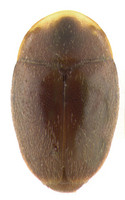
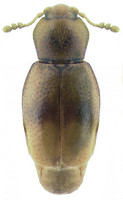
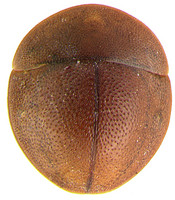
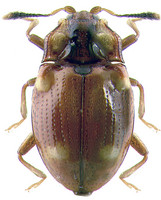
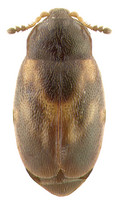






 Go to quick links
Go to quick search
Go to navigation for this section of the ToL site
Go to detailed links for the ToL site
Go to quick links
Go to quick search
Go to navigation for this section of the ToL site
Go to detailed links for the ToL site